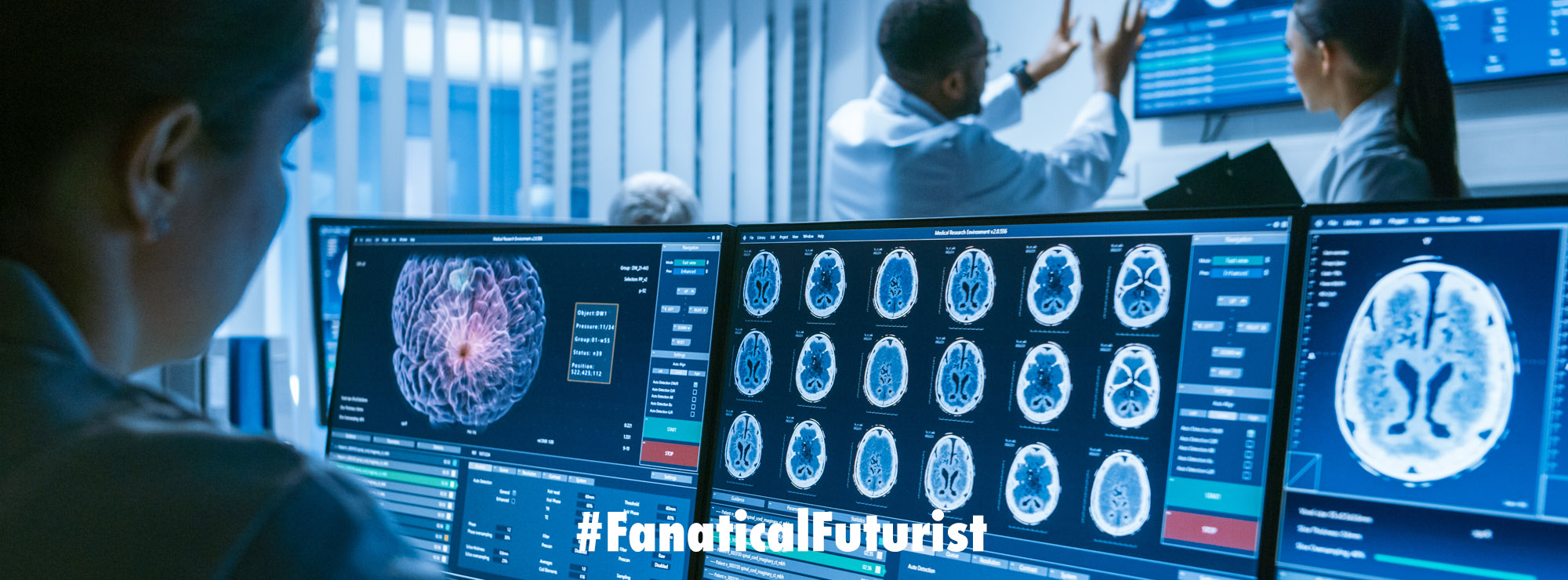
WHY THIS MATTERS IN BRIEF
By creating a digital clone of your body doctors can try out different therapies and treatments to get them right before they apply them to you.
 Love the Exponential Future? Join our XPotential Community, future proof yourself with courses from XPotential University, connect, watch a keynote, or browse my blog.
Love the Exponential Future? Join our XPotential Community, future proof yourself with courses from XPotential University, connect, watch a keynote, or browse my blog.
Digital Twins, which you can think of as being digital clones of physical things – sometimes down to the molecular level – have been gaining in popularity recently with companies like BMW and GE creating digital twins of factories that help them optimise production, digital twins of wind turbines so they can talk to them and diagnose problems, and there’s even a consortium creating a digital twin of the Earth so they can model solutions to problems such as climate change.
Furthermore, a while ago I discussed how the US military wants to use digital twins of their soldiers, like the ones we’ll run through in this article, in the hope that one day they’ll be able to use them as the baseline from which to 3D print replacement human organs when they’re injured in battle.
Now, imagine the worst has happened, you’ve contracted a rare yet deadly disease, the treatment for which is high-risk, and harrowing. But what if you could clone yourself, and let the doctors work out the treatments and guesswork on a digital version of you instead so they knew, with confidence, the best approach and treatment to use?
Researchers at EMPA are doing just that and are developing digital twins of individual patients which they can then use to test sensitive therapies involving trial-and-error dosages, before the flesh and blood patient is subjected to the real deal, according to a recent blog post.
Amazing advances in modern medicine have enabled cutting-edge medical facilities to provide patients with an enhanced quality of life, even when severe illnesses strike. For example, synthetic opiates can help control severe pain experienced from cancer. But the exact dosage remains a challenge.
Painkillers like Fentanyl can dull acute pain, but if the dosage isn’t extremely precise, it can have life-threatening side effects. Today, such painkillers can be applied to patients through the skin via a drug patch, which is a way of giving patients’ bodies a soft introduction to the drug without interfering with daily life, but it’s not an exact science and has its risks.
Now, to guarantee patients receive the correct dosages EMPA researchers have teamed up with the University of Bern to develop a digital twin of a human body, with which doctors and scientists can use to test potential treatments to see how each patient’s “simulated” body will react.
Mathematical models are used to create the twins then researchers include a wide variety of variables from real people like lifestyle and age and add them into the models. These and many others are necessary to accurately predict a drug’s effect on a person, which forms a diagnostic pathway affected by many physical parameters that vary from one to the next patient.
“When creating an avatar, we take into account, for example, how the drug is metabolized in the body during treatment and how much ultimately gets to the pain center in the person’s brain,” said Thijs Defraeye, the team lead at EMPA.
The digital twin can also be updated with psychological and physiological feedback from real patients, to reverse-engineer emergent complications after dosages are given to real patients. For example, humans can offer ongoing information on whether and to what extent their pain or other side effects persist, following a drug dose. Crucial to this capability is the length of pain-free periods. For people on painkillers, some days are good days, others not so much, brimming with painful and ostensibly random events.
“With this feedback from humans, the avatar can dynamically adjust the therapy and even predict the course,” said Flora Bahrami, another EMPA researcher.
Future sensors and wearables could also measure additional physiological parameters like a patient’s respiration or heartbeat rates in real-time to update the digital twin.
Obviously, this is an extremely exciting technology, especially at a time when many people in first world countries lack proper access to effective healthcare. Self-reporting systems to a diagnostic AI updating your digital twin could rapidly expand accessibility for literally millions. And, most importantly, enabling doctors to kill your digital twin again and again might advance experimental treatments or drugs to stages safe enough for patients to enjoy more options, potentially saving lives.















